Here is a film that circles a single object. It's pure Macguffin, in that it would make little difference to the plot if it were a golden walnut, but there is a simple beauty to the falcon itself, and the fact that the mere image of the bird evokes the spirit of the film makes it a powerful artifact today, regardless of...well, you'll know where I'm going if you've seen it.
I got my hands on a plaster casting that claims to be sourced from the prop in the movie. There are hundreds of these floating around. Some people take it as canon, others immediately trash it for its inaccuracies. You can see how bizarrely different, yet proportionally similar this bird is from the real one.
After studying it closely, I'm quite certain that this is, in fact, derived from the same mold as the Falcon on the silver screen, at one point in time. The indented feathers of the Falcon on the screen matches up perfectly to the spaces between the raised feathers on the plaster bird. For one reason or another, the bird was sculpted (by artist Fred Sexton) with raised feathers, then sanded down to produce a more streamlined sculpture. But because the original mold had the raised feathers in it, that's the version that got around (and even made it into the 1975 comedy "The Black Bird"). The other bummer about this casting is that his head is squished, but I can fix that, too.
Now, other people have gotten this far and created beautiful original sculptures. Michael Key of Makeup Artist Magazine, Ozymandius from the Replica Prop Forum, and, most famously, Adam Savage, the Mythbuster. I highly recommend his 15 minute TED talk on the subject. Incidentally, I saw him give this talk at the San Mateo, CA Maker Faire in 2008, which no doubt planted the seed in my head.
I resolved to make this a sculptural restoration project, much like my Hatbox Ghost last year.
Shall we begin?
I molded the plaster bird to do a clay pour in Monster Clay, then proceeded to match it up to the screenshots from the movie.
I shaved and smoothed the feathers, fixed the scoring on the wing feathers, which had been over exaggerated, and reshaped much of the head. This shot is mid-progress.
When I had taken the sculpture as far as I cared to (I felt a certain amount of roughness was okay, given how the real prop was bumped and scratched, and allegedly dropped on Bogart's foot), I molded it, and cast it in Smooth On's Onyx resin (the fast setting version).
And that was kind of anticlimactic. I don't know, maybe it was because the gloss coat I put on the sculpture before molding made it look wet instead of naturally shiny. Maybe it was too shiny. Maybe it's that the resin is ever so slightly translucent, so it doesn't look like a solid surface. But the big problem I had is that you could no longer see the detail, so it didn't look like the Falcon in the movie.
But I had another idea.
The original lead Maltese Falcon went up for auction about 20 years ago. The first thing that struck me about the promotional images (after the color) is that you can tell it's the bird seen in this shot in the movie because the eyebrow is dented in the same way. I assumed that somehow the gold color had been exposed over the years since shooting. But, as I looked closer at the tonal variations in the screenshot, I saw that the lighter areas corresponded to the gold areas on the auction bird, specifically around the neck. I became reasonably confident that this gold/brown coloration was more or less how the bird appeared on set.
It makes sense, too. Even though the script specifies a "black bird," the art department wouldn't make a jet black prop. It wouldn't show up well on camera. Funny, because it's the same problem I had with my black bird.
So I cast another copy. This time, I wanted to do a bronze bird. I can't tell what material the lead bird is covered with, but bronze seemed like a nice approximation, based on this image from the auction.
I went with a cold cast bronze process, rather than paint, because I wanted an extra element of authenticity. Cold casting is basically putting a layer of metal on the surface of the cast resin part, rather than going to a foundry and actually pouring up molten metal. I'm aware of two methods of cold casting. First is to mix metal powder into the first layer of resin, then buff away the some of the resin to expose the metal particles. The second is to dust the surface of the mold with metal powder, and back it with resin. You can also do both in the same casting. I tested both methods with the Smooth Cast Onyx and felt I got the most out of the second.
When the cold cast bronze bird came out of the mold, he was a sad brown bird. The trick is to buff the surface with 0000 steel wool to bring out the shine. Here I've polished the left side so you can (sort of) see the difference.
From there, I did a rub out (literally painting on and rubbing off) of black/brown acrylic. I may have been a bit heavy handed with the paint, but it's easy to remove later because it's just sitting on top of the metal.
Here's the progression of plaster bird, clay bird, black bird, and bronze bird.
Much better.
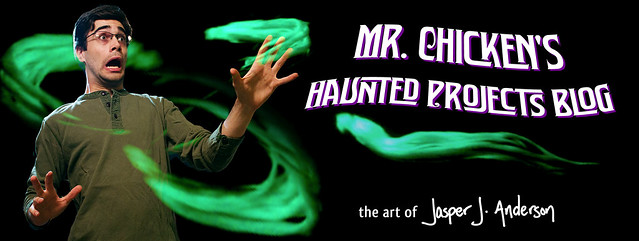





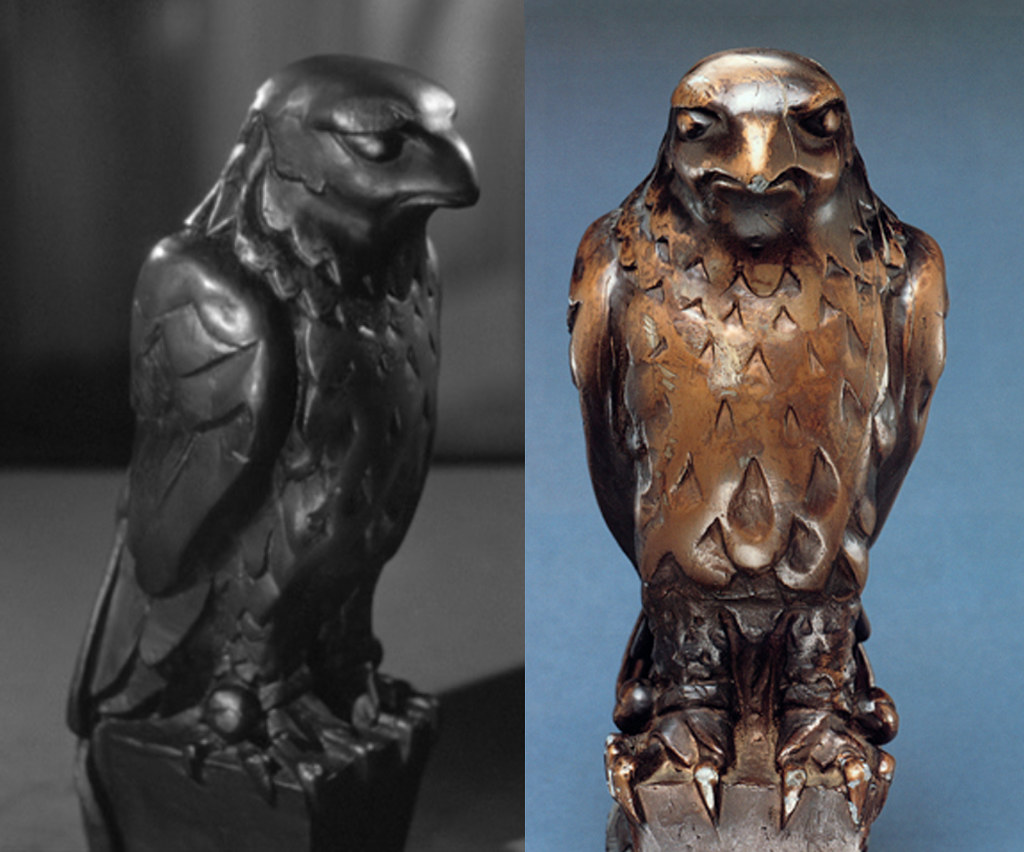




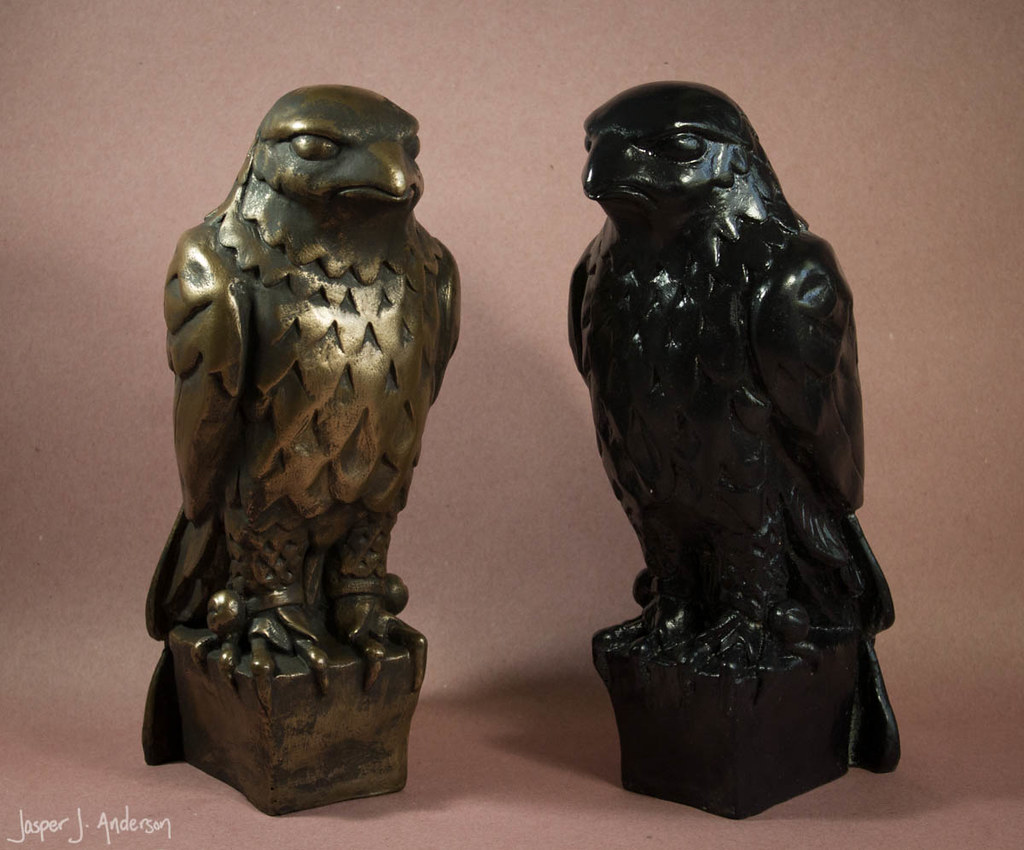
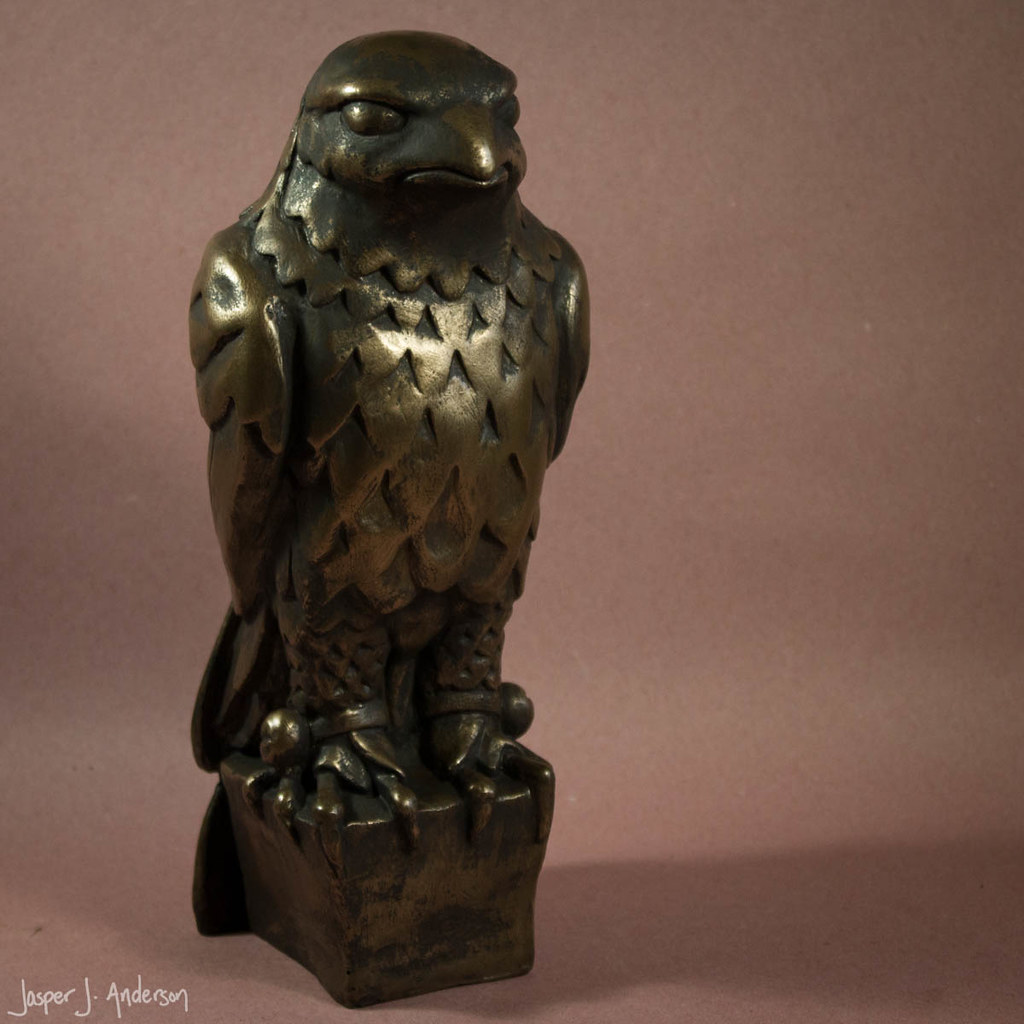
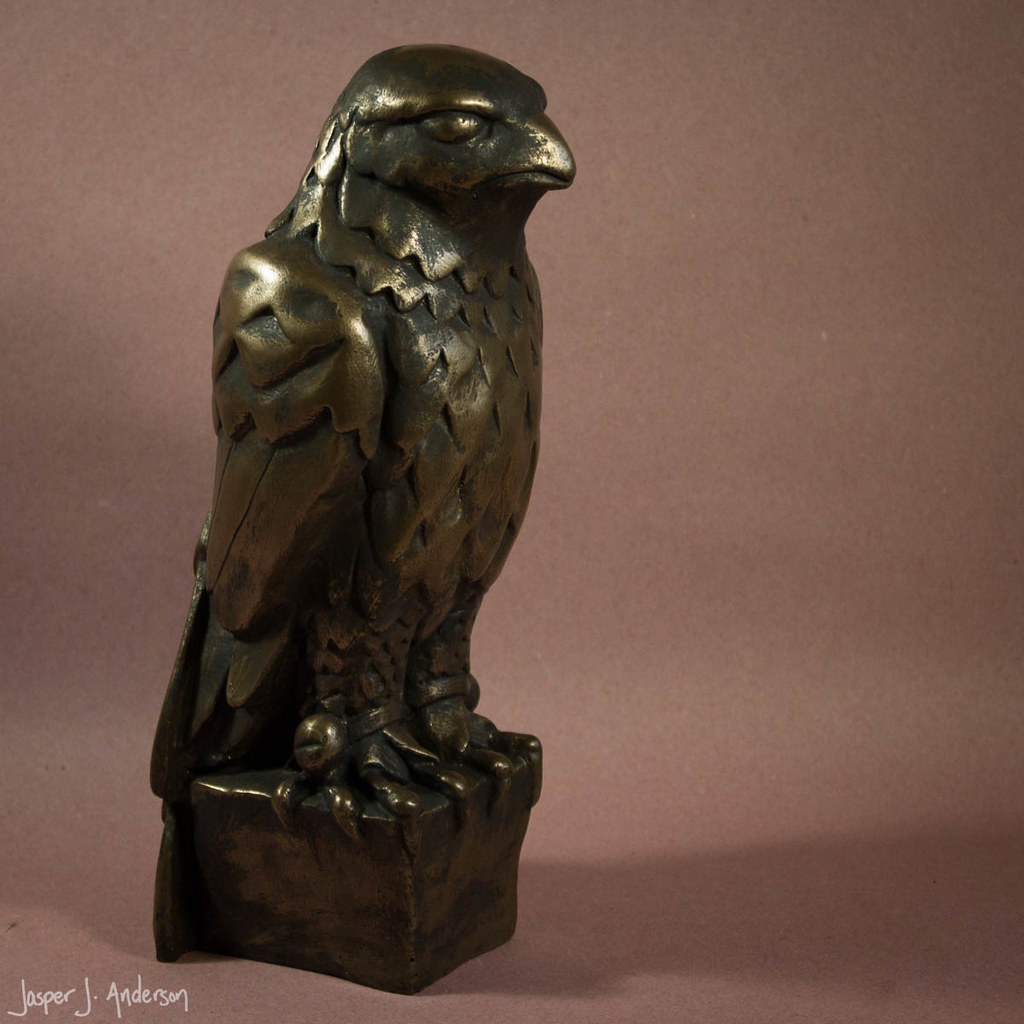


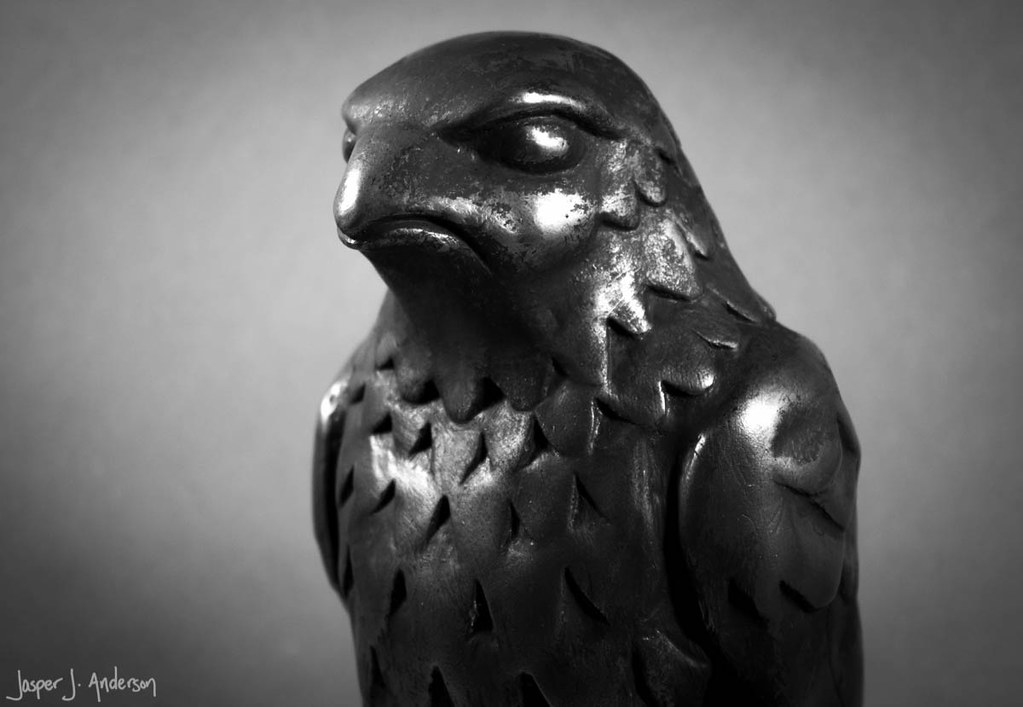
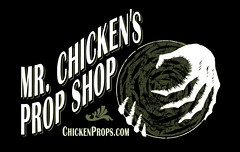
Really cool to see the progress and hear your thoughts on it. Great job as usual.
ReplyDeleteWhere can I place my order?
ReplyDeleteI suppose this won't qualify for Amazon Prime.
So Cool!
Absolutely amazing. Just wow!
ReplyDeleteGreat work on this !
ReplyDeleteI too spend far too much time on Turner Classic Movies channel! Love it!
ReplyDeletenice statue
ReplyDeleteHni Calls In Commodity